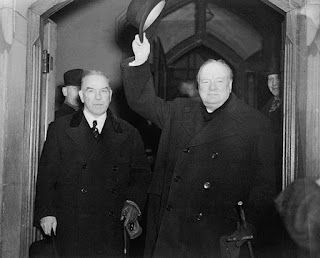This week's post was inspired by a tiny little reference in an article I read for my African History course about the historical significance of diaries. It does relate to the First World War, but also has quite a fascinating twist that I hope will be something new and interesting!
Our story begins when John William Springthorpe was born on 29 August, 1855 at Wolverhampton, Staffordshire, England. As an infant, he and his family moved to Australia, where he went to school in Sydney and Melbourne before attending the University of Melbourne. A brilliant student who won several exhibitions during his studies, he graduated as a doctor of medicine in 1884. He worked as a medical officer at Beechworth Asylum before moving back to England, where he became the first Australian graduate admitted to the Royal College of Physicians. In late 1883, he moved back to Melbourne, where he continued an extremely successful medical career, became a university lecturer, and published a two-volume textbook. Dr. Springthorpe's energies flowed into many different areas, including setting up a training and registration in dentistry, helping found the Royal Victorian Trained Nurses Association, ambulance work, and child welfare. He also held such positions as president of the Victorian branch of the British Medical association and the Melbourne Medical Association.
When the First World War broke out, he quickly enlisted in the Australian Army Medical Corps in 1914 with the rank of lieutenant-colonel, and became senior physician to No. 2 Australian General Hospital. He returned to Melbourne in 1916 but was posted again to France and then to England, where he worked with soldiers suffering from nerve disorders. After finally returning home in 1919 with what he considered little recognition of his war service, he found that his university and hospital appointments had lapsed. Forced back to his previous post as a visitor to metropolitan asylums, he recommenced private practice and worked for the infant welfare movement.
 |
| Doctors Colonel Springthorpe (right) with Sir Stanley Seymour Argyle (left) c.1914–18. Australian War Memorial, AWM PS1087 |
On January 26 (Australia Day) 1887, at the age of thirty-one, he married twenty-year-old heiress Annie Constance Marie Inglis and they moved into the fashionable, doctors' end of Melbourne. Ten years later, she died while giving birth to their fourth child. Consumed with grief, Dr. Springthorpe sent the children to stay with relatives and poured his sorrow into his diaries. He transformed their house into a shrine for Annie, covering the walls with photographs and paintings to commemorate their married life and leaving everything exactly how it had been the day she died- including the bloodstain from where she had hemorrhaged.
 |
| Annie on her wedding day |
On July 19, 1899, he made up bouquets for the children to place on the coffin in the open vault while he read a service. Over the next eighteen months, the building of the memorial continued, and on October 2, 1899 he received photographs of the sculpture for her grave: "On a fitting sarcophagus, regal in design, lies the recumbent figure of my Love, with lillies on the breast, at her feet Human grief bends low, with tear dried eye, and over Her head, a glorious Angel, sent by Divine Love- the Love that never dies."
 |
| The very top reads "Love Evermore" |
 |
| The roof is made of red glass that bathes the marble in a rosy glow. |
My own true love
Pattern daughter perfect mother and ideal wife
Born on the 26th day of January 1867
Married on the 26th day of January 1887
Buried on the 26th day of January 1897
The entire project cost a massive amount, although it is uncertain what the final cost amounted to. Estimates range from what in today's currency would be around $700,000 and $1.3 million. The memorial remains to this day as a physical link to Dr. Springthorpe's grief, and a tomb "for all true lovers to the end of Time."
On March 15 1916, Dr. Springthorpe married Daisie Evelyn Johnstone, a nurse and the daughter of his housekeeper. He died on April 22 1933, and was survived by three of the four children from his first marriage. His youngest son, Guy, became a well-known Melbourne psychiatrist.































































